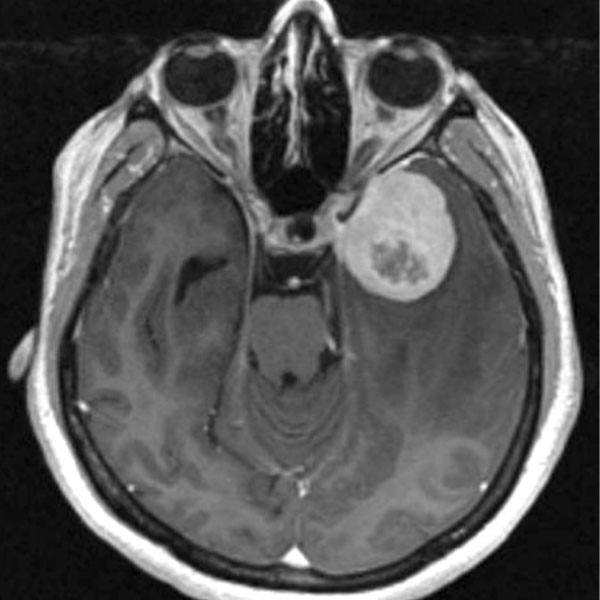-
How preeclampsia accelerates aging in women
Preeclampsia—the life-threatening surge in blood pressure that strikes 1 in 25 pregnancies—is an enigmatic condition. Each year, it causes the deaths of more than 70,000 women worldwide. Because scientists do not know what causes it, they lack targeted strategies to treat it.

Delivery, the only available therapy, is not the "cure" it is often made out to be, according to Vesna D. Garovic, M.D., Ph.D., a nephrologist at Mayo Clinic who has devoted her career to studying this common pregnancy complication. "Even after delivery, women can have dangerously high blood pressure for many days or weeks," she says. "And they remain at an elevated risk for cardiovascular and kidney disease decades later."
Through a combination of laboratory experiments and epidemiological studies, Dr. Garovic has shown that women with preeclampsia undergo a state of accelerated aging that propels them down the path of developing age-related conditions such as heart attack, stroke, and kidney failure.
Her research is unraveling a potential mechanism behind preeclampsia that could lead to the first therapeutics designed to treat an underlying cause of the condition. It also highlights the importance of increased screening and treatment for women with a history of preeclampsia.
The clock is ticking
Most preeclampsia research is based on the premise that the disease arises within the placenta, the organ that materializes with each pregnancy to protect and nurture the developing baby. Researchers believe that in preeclampsia, the "diseased" placenta secretes molecules into the mother's circulatory system that cause inflammation and interfere with the formation of new blood vessels, a process known as angiogenesis. They believe that these nefarious molecules cause systemic disease in the pregnant person.
"The Holy Grail of preeclampsia research," says Dr. Garovic, "has been to identify the molecule or molecules of placental origin that are responsible."
For decades, researchers had noticed that placentas delivered from preeclamptic pregnancies often bore signs that they were aging faster than placentas delivered from normal pregnancies. "However, it was counterintuitive to say that preeclampsia was a disease of aging if you're looking at somebody who's 25 years old," Dr. Garovic says.
In fact, many of the molecules that were elevated in preeclamptic pregnancies were well-known markers of senescence, a cellular state that literally means "the process of growing old." Dr. Garovic postulated that senescence may be the pathway by which some women develop preeclampsia. Senescent cells stop dividing, but they do not die and are not always eliminated from the body. Instead, they sometimes accumulate in tissues and secrete harmful molecules.
Using samples and data from the Rochester Epidemiology Project, Dr. Garovic has tracked various signs of aging and senescence in women with and without preeclamptic pregnancies. Together with Mayo Clinic obstetrician-gynecologists Wendy White, M.D., and Yvonne Butler Tobah, M.D., she found that women who have had preeclampsia have a greater number of chronic conditions later in life—and develop these conditions at a much younger age—than those without a history of preeclampsia.
She also teamed up with Mayo Clinic cellular senescence experts James Kirkland, M.D., Ph.D., and Tamara Tchkonia, Ph.D., to show that women with preeclampsia undergo accelerated aging during pregnancy, as demonstrated by the "epigenetic clock." These epigenetic clocks enable researchers to calculate the biological aging of blood and other tissues by measuring the accumulation of methyl tags—which shift over time in any given organism—at hundreds of sites across the genome.
The researchers found that during their pregnancies and at the time of delivery, women with preeclampsia had aged an average of 2.4 years more quickly than women without the pregnancy complication.
The team took a special subset of cells called mesenchymal stem cells—cells found in bone marrow that help make and repair skeletal tissue like cartilage, bone, and fat—from fat tissue obtained during C-sections of preeclamptic pregnancies and grew them in a dish. They found that those preeclamptic, prematurely aging cells did not form the spindly, tubular structures that give rise to the blood vessels necessary to support healthy pregnancies.
Such impaired angiogenesis may create lifelong complications for both the mother and the child. Interestingly, the researchers showed that they could correct this defect by treating the cells with "senolytics," a class of drugs that selectively eliminates senescent cells.
"Unfortunately, the use of senolytics is contraindicated during pregnancy because the process of cell senescence is critical for the development of the embryo," says Dr. Garovic. "But treatment with senolytics can be considered in non-pregnant women with prior histories of preeclampsia to try to turn back their biological clock and potentially reduce their risk of complications in future pregnancies or later in life."
Dr. Garovic holds out hope that new medications being developed in the field of senescence may one day prove to be safe for use during pregnancy, providing more options to women at risk. "The whole field is exploding," she says.
Reducing ramifications
Even if there are no specific treatments available right now to target senescent cells in women with a history of preeclampsia, Dr. Garovic believes research on the associations between this pregnancy complication and future health issues will have a big impact.
Her studies and others are already leading to new guidelines for the screening and treatment of women at risk, with the ultimate goal of improving outcomes and saving lives. For example, Dr. Garovic served on a working group for the American Heart Association examining hypertension in pregnancy and penned the association’s scientific statement, which called for more work to protect women from complications of hypertensive pregnancies and possible post-pregnancy consequences.
"For women who have had preeclampsia, their blood pressure needs to be monitored, their cholesterol needs to be checked, their kidney function needs to be followed. We need to keep track of their BMI and weight and try to manage lifestyle modifications and their health long-term."
Vesna D. Garovic, M.D., Ph.D.
"First of all, just changing our approach to treating women with these high-risk pregnancies could make a difference," she says. "For women who have had preeclampsia, their blood pressure needs to be monitored, their cholesterol needs to be checked, their kidney function needs to be followed. We need to keep track of their BMI and weight and try to manage lifestyle modifications and their health long-term."
For now, Dr. Garovic continues to track the health outcomes of women enrolled in the Rochester Epidemiology Project with a close eye on the association between preeclampsia and hypertension, coronary heart disease, congestive heart failure, stroke and cognitive impairment. She also just launched a study in a preclinical model of preeclampsia, which will enable her to establish links between the disease, accelerated aging and adverse cardiovascular outcomes quicker than she could by observing human subjects.
"The ramifications of preeclampsia are amazing, in terms of affecting not only women but also their families and their extended families," says Dr. Garovic. "It is really a disease that has major effects on society. If I could change the perception of the disease, and maybe even figure out how to treat it, that would be very gratifying."
—Marla Broadfoot, Ph.D.
Read more on Dr. Garovic's research: Preeclampsia linked to increased markers of brain cell damage, inflammation (8/3/22)









